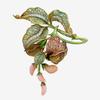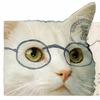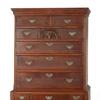'Shepard Fairey: Salad Days, 1989-1999' at Cranbrook Art Museum This Summer
- BLOOMFIELD HILLS, Michigan
- /
- April 30, 2018
Influential street artist Shepard Fairey has been a consistent presence in national and international art scenes since the 1990s. The LA-based artist is perhaps best known locally through his downtown Detroit mural at One Campus Martius, his ubiquitous Hope image created originally as a grassroots activism tool to support Barack Obama’s 2008 presidential campaign, and the pervasive We the People poster series for the 2017 Women’s March and beyond.
Shepard Fairey: Salad Days, 1989-1999, at the Cranbrook Art Museum, from June 16 to Oct. 7, 2018, considers the first 10 years of Fairey’s artistic practice, and its roots in the graphic language and philosophies of the punk scene. Punk’s ethos played a decisive role in the artist’s early work. “When I discovered punk rock, and realized that music could have an attitude in its style but a specific point of view in its lyrics,” states Fairey, “I became even more interested in how it works as a way of shaping attitudes and culture.”
From 1989 to 1999, the artist adopted many of punk’s biting and playful graphic strategies, as well as its low-tech methods of production and distribution. Fairey created his first Andre the Giant has a Possesticker in a spontaneous DIY manner, appropriating an image of professional wrestler André René Roussimoff (aka André the Giant) from a newspaper. The image would gain iconic status when it spread via friends and fans to city streets across the United States and eventually around the world. The Andre the Giant campaign and image would transform in the mid-1990s into the Obey Giant series, which was inspired by John Carpenter’s sci-fi horror film, They Live (1988) and its plot about subliminal messages implanted in a society in order to control its inhabitants. Taking inspiration from early Russian Constructivist poster designs in particular and from revolutionary propaganda posters in general, Obey Giant prints were posted unsolicited on billboards, buildings, and other parts of the city.
“In Fairey’s earliest works we can see the inheritance of the punk ethos: the satirical impulse, the guerilla-style poster sniping, the oblique references to pop culture, and the very public stage of the street as a place for unapologetic individual expression,” states Blauvelt, Director of the Cranbrook Art Museum. He continues, “Shepard Fairey is a perfect bridge to connect the history of punk graphics that we are also exhibiting at the same time to his seminal work from the 1990s.”
Shepard Fairey: Salad Days, 1989-1999 showcases the artist’s formative years through a variety of posters, stickers, and archival documents showing his engagement with punk. It will also feature a new installation in Cranbrook Art Museum’s galleries created by the artist.




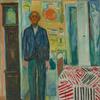

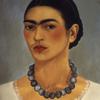
100x100_c.jpg)

